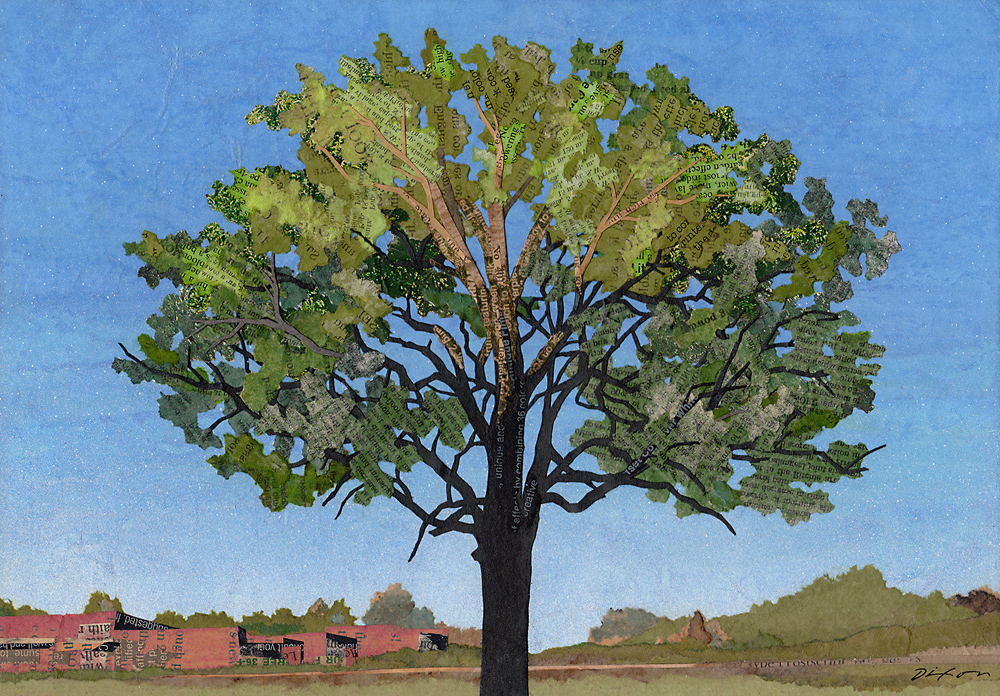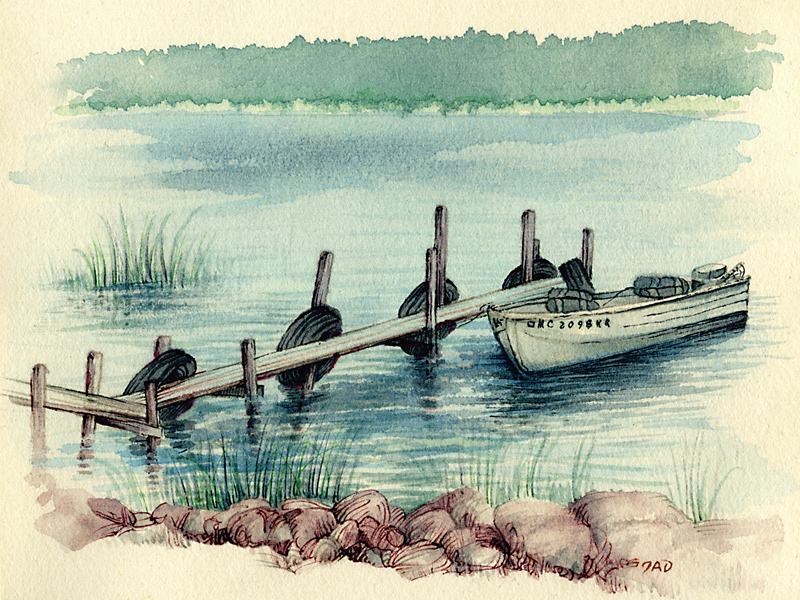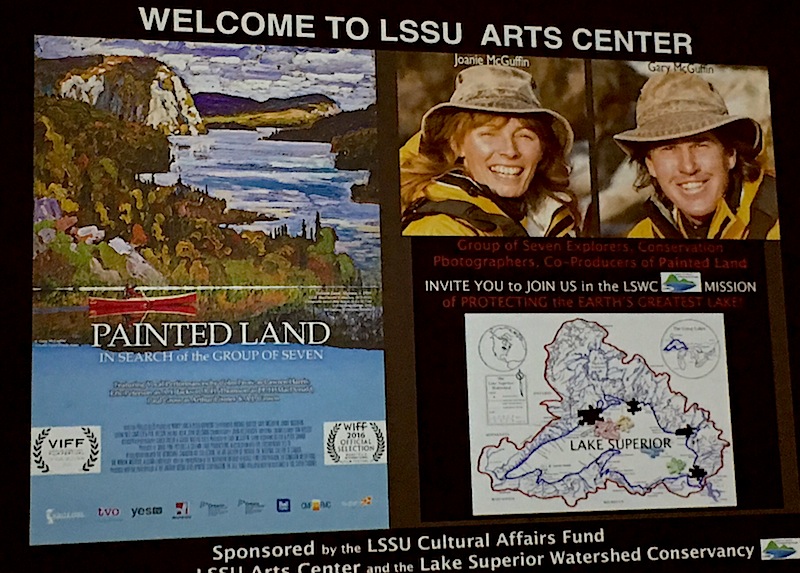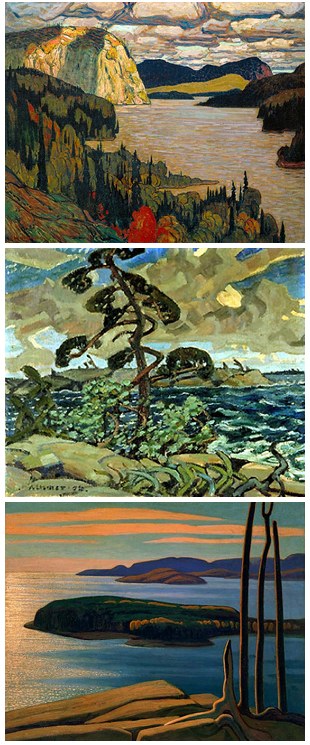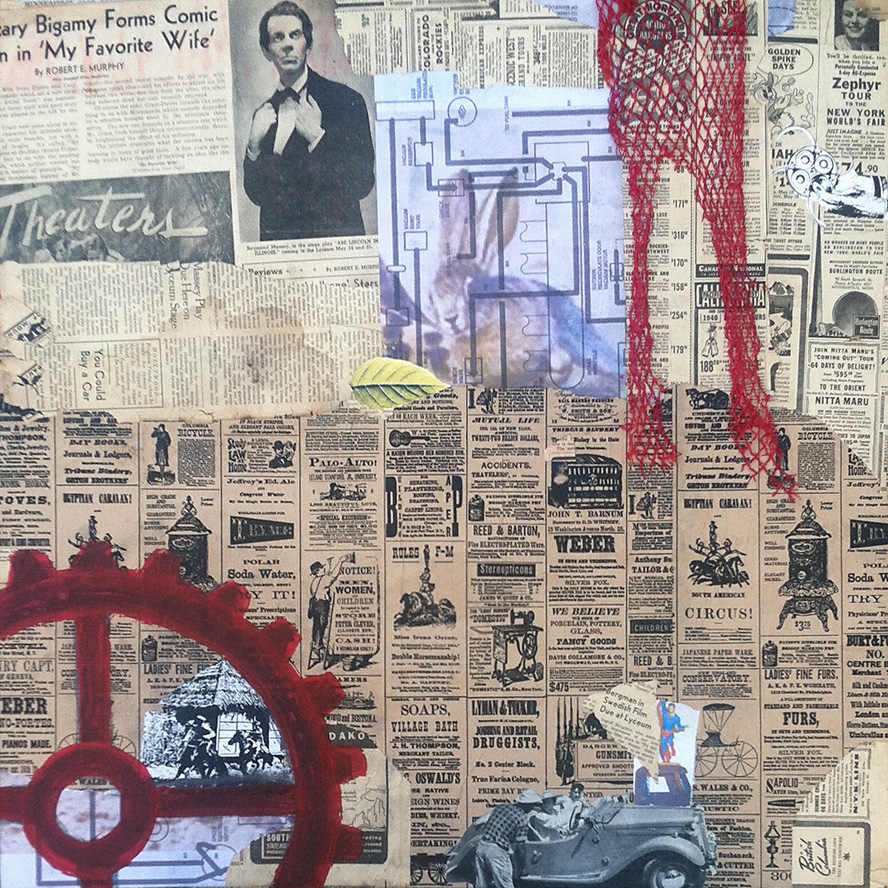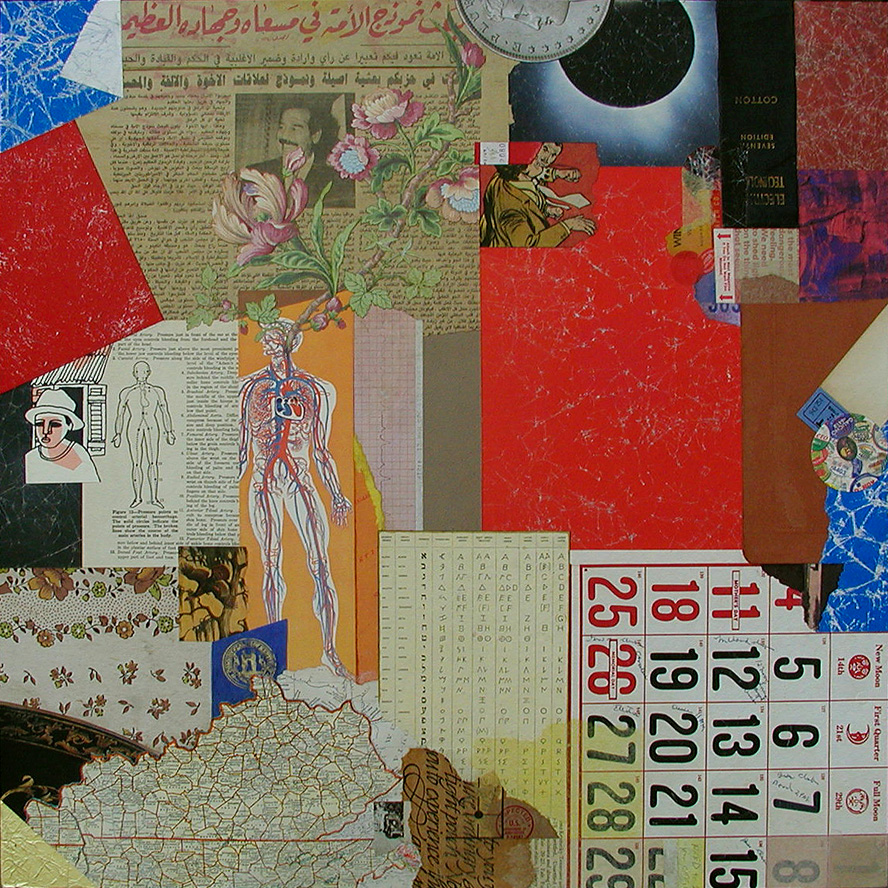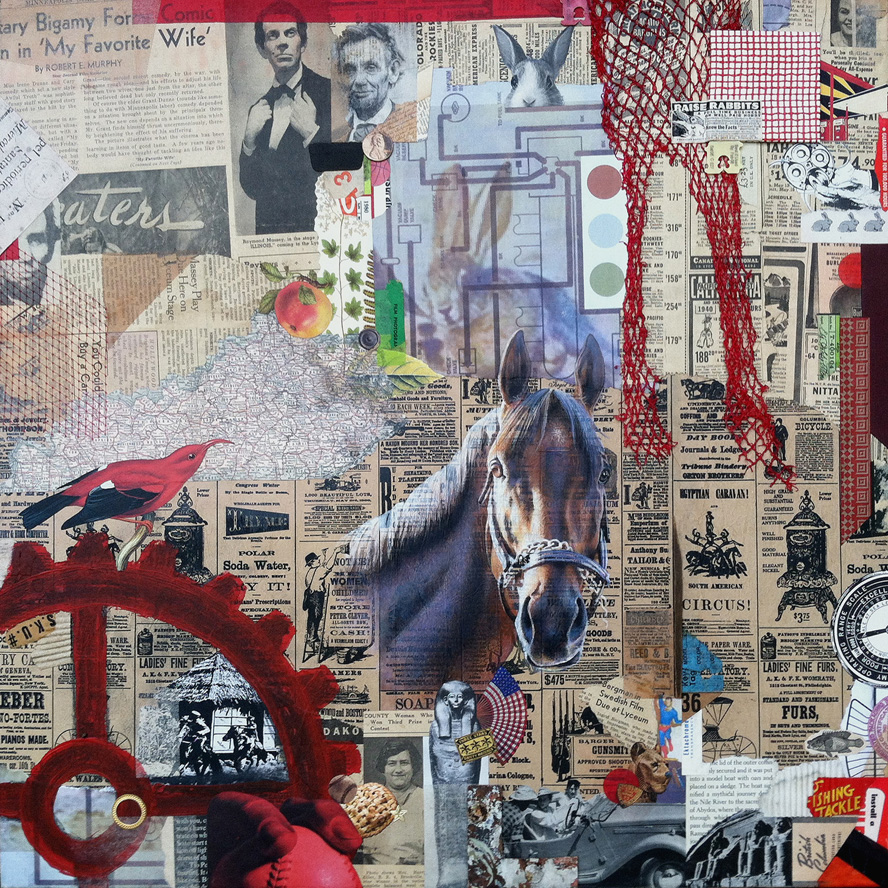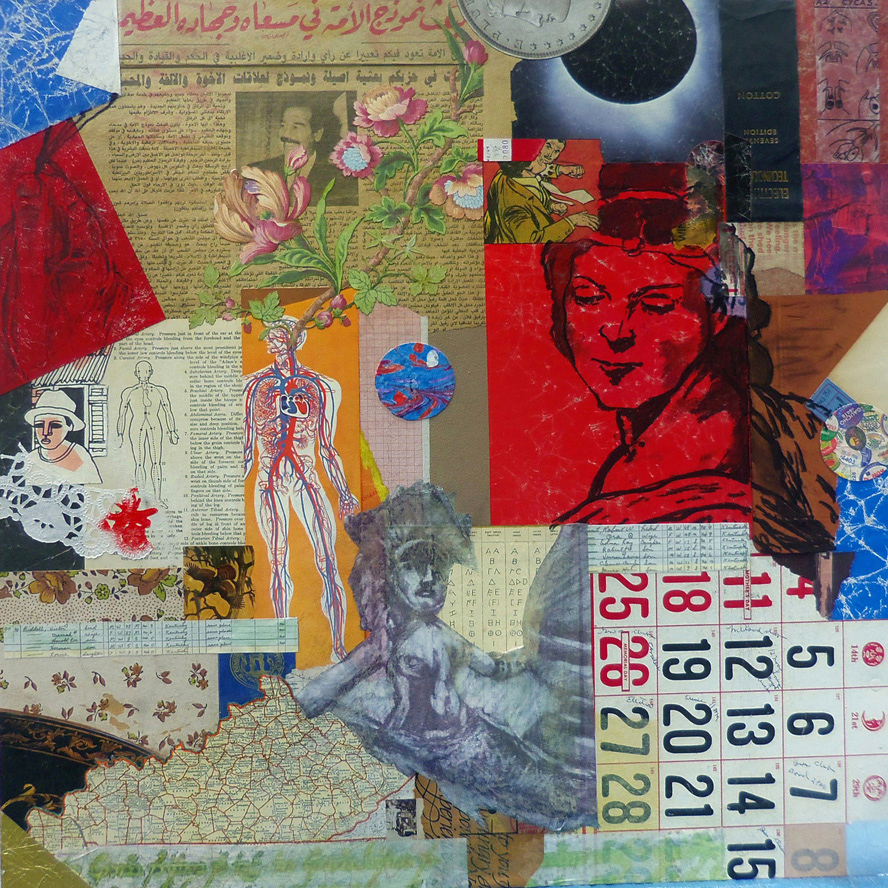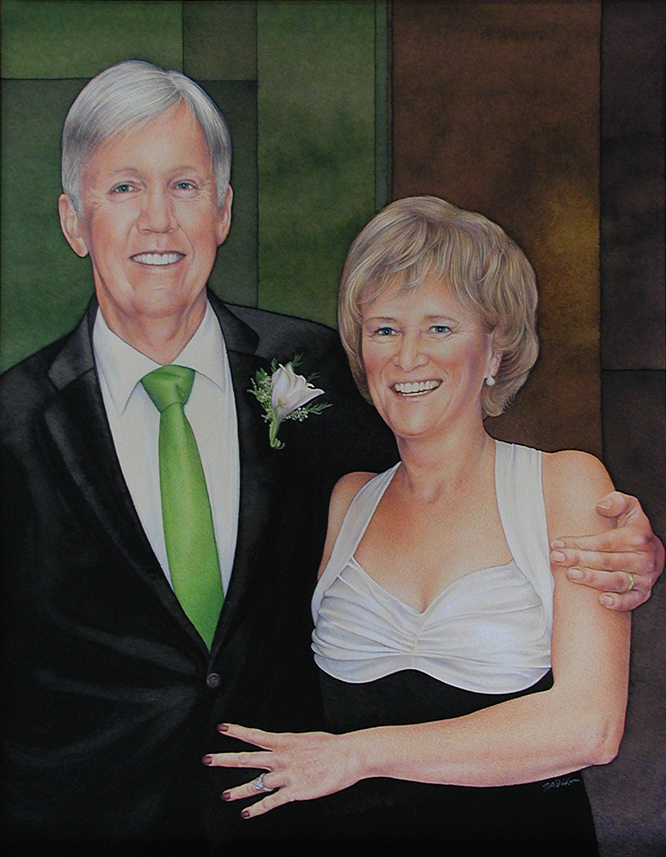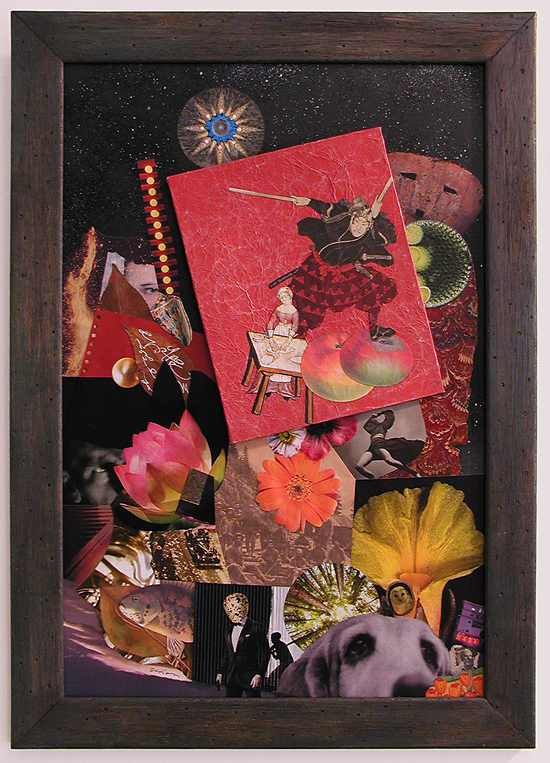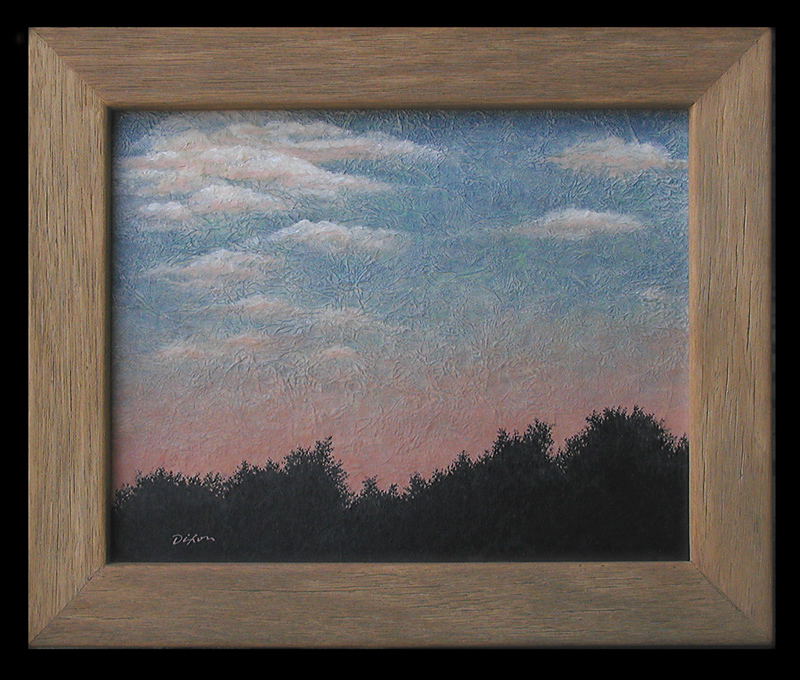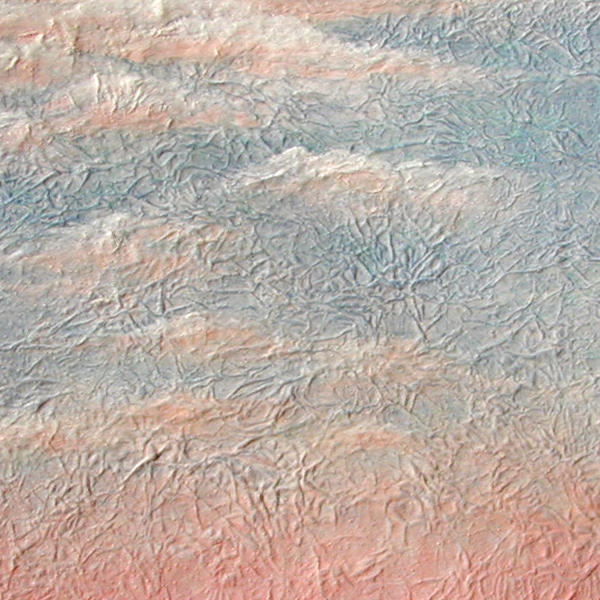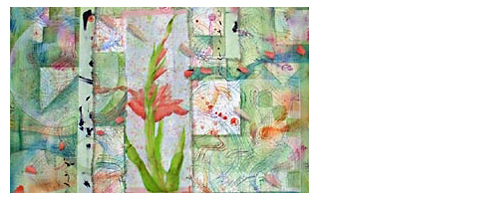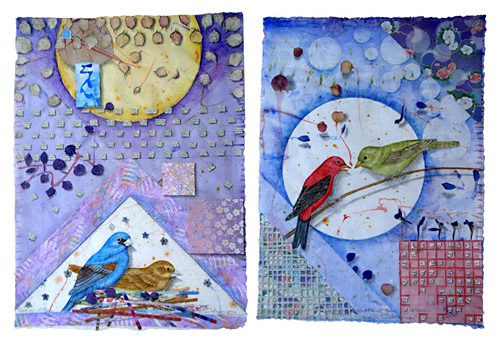“Follow the ways of natural creation, the becoming, the functioning of forms, then perhaps starting from nature you will achieve formations of your own, and one day you may even become like nature yourself and start creating.”
— Paul Klee
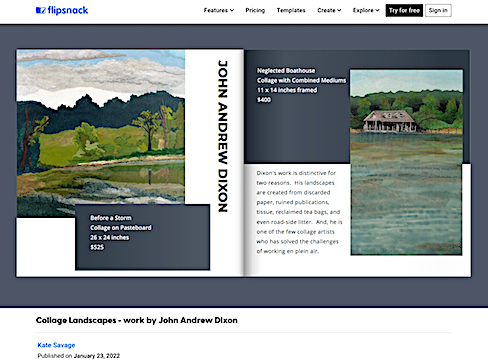 As I pushed toward the hanging date for CHANGE OF SEEN last month, I pulled out an unfinished work. In 2020 it had been my hope to complete it as part of the Paint By Nature entry — an interpretation of an urban oak tree. Everything was done except for the tree itself, which I’d wanted to paste together in a burst of spontaneity. The “start” went into cold storage when I ran out of time for two submissions. Fast forward to January 2022. Now I had the ideal scenario. My tight deadline would not allow me to indulge any slowdown or second guess. Positive, unanticipated things often happen when I occasionally challenge myself to work under a severe constraint. The hesitant, rational mind is sidelined in favor of an intuitive response that is rooted in everything one has ever created. This can be the case with music, writing, or nearly any artistic format, but the phenomenon especially lends itself to painting.
As I pushed toward the hanging date for CHANGE OF SEEN last month, I pulled out an unfinished work. In 2020 it had been my hope to complete it as part of the Paint By Nature entry — an interpretation of an urban oak tree. Everything was done except for the tree itself, which I’d wanted to paste together in a burst of spontaneity. The “start” went into cold storage when I ran out of time for two submissions. Fast forward to January 2022. Now I had the ideal scenario. My tight deadline would not allow me to indulge any slowdown or second guess. Positive, unanticipated things often happen when I occasionally challenge myself to work under a severe constraint. The hesitant, rational mind is sidelined in favor of an intuitive response that is rooted in everything one has ever created. This can be the case with music, writing, or nearly any artistic format, but the phenomenon especially lends itself to painting.
Interestingly, I’ve always preferred watercolors to other paint mediums because of its unpredictability and the “happy accidents” that occur. I admire oils greatly, but they hold no attraction for me as I approach my 70s. I hadn’t expected to discover that “painting in papers” could captivate me so and knit a reverence for nature into my art. 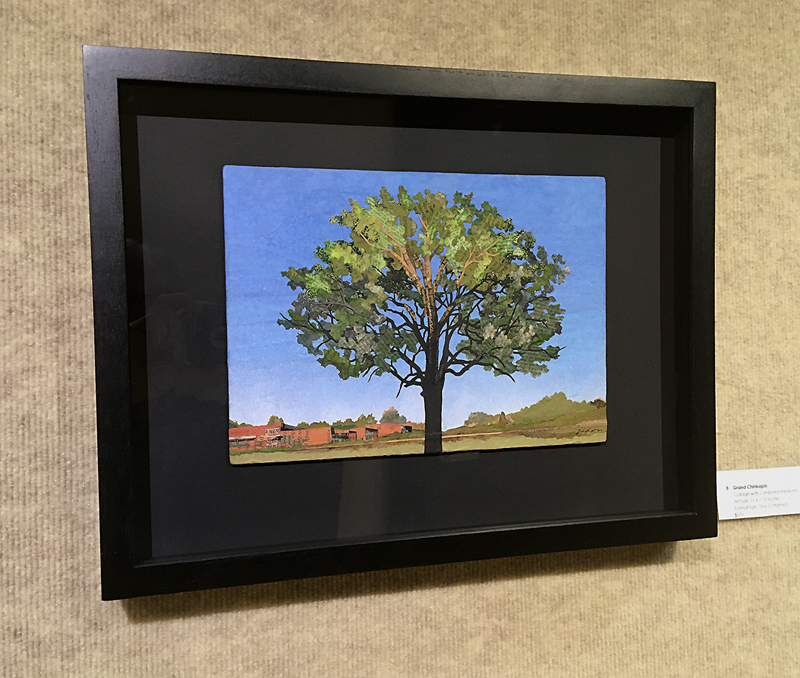
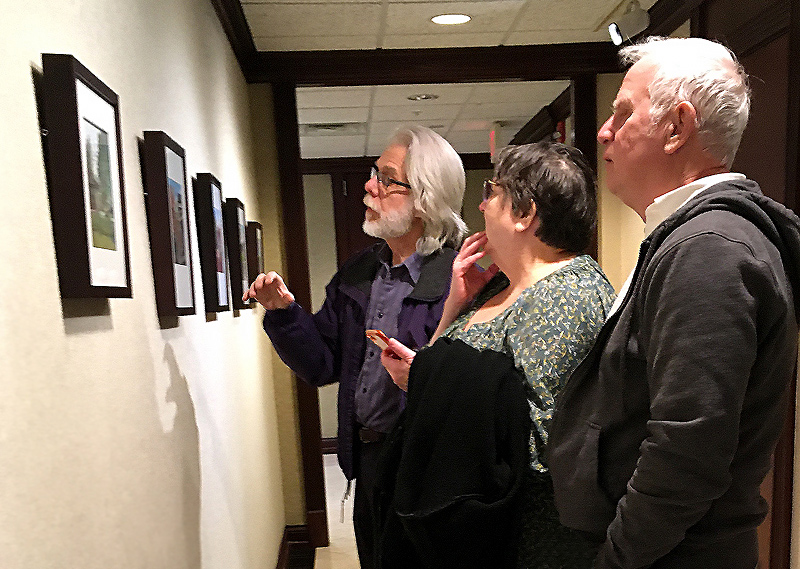 One of the primary appeals of collage is total flexibility. It’s almost impossible to make a blunder, if one stays “in the zone” without letting the intellect gain an upper hand. When others use words such as exacting or meticulous to describe what I do, it usually throws me, because I consider my approach as more instinctive. And yet, there is no denying the presence of “artisanship.” With any task at hand, craft is essential. It was drilled into me with rigor after I chose the path of applied design. (That the young are asked to dedicate themselves to a particular discipline and to ignore countless alternatives is a weird fact of life. Many of us spend decades unraveling it.) So, a certain precision is fused into my method, even when I’m racing the clock. One man’s chaos is another man’s perfectionism.
One of the primary appeals of collage is total flexibility. It’s almost impossible to make a blunder, if one stays “in the zone” without letting the intellect gain an upper hand. When others use words such as exacting or meticulous to describe what I do, it usually throws me, because I consider my approach as more instinctive. And yet, there is no denying the presence of “artisanship.” With any task at hand, craft is essential. It was drilled into me with rigor after I chose the path of applied design. (That the young are asked to dedicate themselves to a particular discipline and to ignore countless alternatives is a weird fact of life. Many of us spend decades unraveling it.) So, a certain precision is fused into my method, even when I’m racing the clock. One man’s chaos is another man’s perfectionism.
I’ve lived my adult life trying to spin creative gold in a studio of one sort or another. A supremacy of the natural world in my youth had been set aside as part of an itinerary toward the graphic arts profession. Reflecting on a long journey that leads to the ever-rolling “now,” I recognize that nature was always calling. It influenced my leaving big cities for a smaller community. It provided a firm foundation for my diet and a health-oriented lifestyle. It was an unfailing source for well-being when conditions seemed out of balance. Even so, an unsatisfied need remained elusive until I finally took paper and paste outdoors, where the potential for inspiration was out of arm’s reach. That I could respond with collage, and find it so rewarding, is something I hadn’t foreseen.
If you want to start with the first chapter, you can find that story here. It’s been almost five years of direct observation, and I’m itching to begin a new season of working en plein air. The broader point I’d like to make is how the experience also has invigorated the way I approach representational collage in the studio. It feels like it’s all been funneled into an evolving intuition. Working outside has transformed how I make visual decisions even when using photographic reference under pressure, as I did with Grand Chinkapin. After quickly preparing piles of printed scrap that seemed appropriate for tree foliage, I was able to explode those ingredients into place with a minimum of conscious thought — not unlike I try to do every time I take my collage kit on location. “Painting from nature with paper” has become a more integrated practice, inside or outside. Change of Seen shares this adventure with others.
Grand Chinkapin
collage with combined mediums by J A Dixon
0% / 100% — site to studio
11 x 7.75 inches + shadow-box frame
available for purchase
